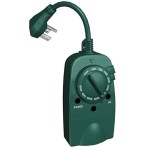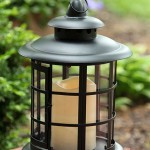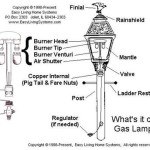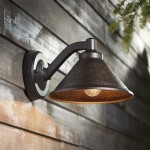Outdoor Landscape Lighting Power Supply: Essential Considerations
When designing an outdoor landscape lighting system, it's crucial to select an appropriate power supply that meets the specific requirements of your setup. Here are some essential aspects to consider:
1. Voltage Requirements: Outdoor lighting fixtures typically operate at either low voltage (12-24 volts) or line voltage (120-240 volts). Low-voltage systems require a transformer to step down the voltage from the main power source, ensuring safety and preventing damage to the lights. Line-voltage systems are more direct and do not require a transformer but may pose a higher risk of electrocution.
2. Amperage Capacity: The amperage capacity of the power supply determines the number of lights it can power. Each lighting fixture has a specified wattage, and the total wattage of all connected lights cannot exceed the amperage capacity of the power supply. Overloading the power supply can lead to overheating, electrical hazards, and premature failure.
3. Transformer Selection: If opting for a low-voltage system, selecting an appropriate transformer is essential. Transformers are rated in volts-amperes (VA), which represents the maximum power they can handle. The VA rating of the transformer should be equal to or slightly higher than the total wattage of the connected lights.
4. Wiring and Connections: Proper wiring and connections are crucial for a reliable and safe lighting system. Use outdoor-rated wire with the appropriate gauge for the distance and amperage requirements. Make sure all connections are weatherproof and secure to prevent electrical issues.
5. Power Source: The power supply can be connected directly to an existing electrical outlet or a dedicated power source such as a landscape transformer box. If connecting to an outlet, ensure it has a Ground Fault Circuit Interrupter (GFCI) for added safety. For dedicated power sources, consider using a timer to automate the lighting schedule.
6. Cable Burial: Outdoor lighting cables should be buried underground for both safety and aesthetics. Bury cables at a depth of at least 6 inches and mark them with a cable tracer or warning tape for easy identification during future maintenance.
7. Power Management: Outdoor lighting can be controlled manually or remotely using a lighting controller. Lighting controllers offer features like scheduling, dimming, and motion detection, providing convenience and energy efficiency.
By carefully considering these essential aspects of outdoor landscape lighting power supply, you can ensure a safe, reliable, and functional system that enhances the beauty and security of your outdoor space.

120w Outdoor Low Voltage Transformer With Timer And Photo Sensor 120v Ac To 15v Power Supply Suitable For 12 Exterior Garden Landscape Lighting Etl Listed Com

60w Low Voltage Landscape Lighting Transformer Diodedrive Series Integrated Photocell And Timer Super Bright Leds

Low Voltage Landscape Lighting Transformer Integrated Photocell And Timer Diode Drive Power Supplies

300w Outdoor Low Voltage Transformer With Timer And Photo Sensor 120v Ac To 12v 15v Power Supply Suitable For 12 Exterior Garden Landscape Lighting Etl Listed Com

Project Case Study Outdoor Lighting In Columbia Il Linnemann Lawn Care Landscaping Blog

Kichler 200 Watt 12 Volt Multi Tap Landscape Lighting Transformer With Digital Timer In The Transformers Department At Com

Malory 150w Low Voltage Transformer For Landscape Lighting 120v Ac To

Solar Torch Lamp Decorations Lights Outdoor Power Supply Decor Led Garden Tree Light Waterproof For Patio Lawn Yard Pathway Thanksgiving Hallowmas Day Autumn Decoration Warm White

Pure Garden 15 In Black Outdoor Integrated Led Landscape Solar Coach Path Lights 6 Pack Hw1500089 The Home Depot

2pcs Outdoor Solar Smoke Lanterns You Can Diy A Variety Of Fireworks Decorative Lights 120 Led Power Supply Copper Wire String Landscape Thanksgiving Decoration Backyard Lawn Courtyard
Related Posts







